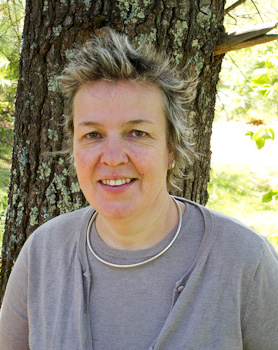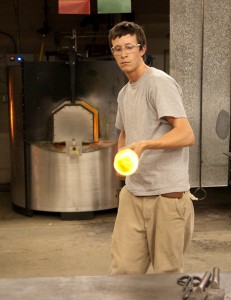
Golly Peters first became aware of Penland when she found the Penland Book of Ceramics in Amsterdam. She was so impressed with the book that she found Penland on the Internet and learned that it was a school that anyone could apply to and attend. She sensed that there was something special about Penland and hoped to go there one day.
Golly lives in Brussels, and has found that Belgian ceramicists are secretive about their processes and not open to sharing with others. Though she had been doing ceramics for five years, she had been struggling with moldmaking and so she signed up for Tom Spleth’s spring class in moldmaking and slipcasting. Earlier this year Golly had to have some serious surgery and coming to Penland was a tremendous incentive and helped her recovery.
Now Golly can’t wait to go home and share what she has learned with others. She feels more confident than ever with her work and now sees flaws that she didn’t see before. “Penland brought the fun back into my work and gave me permission to play again,” she said. “ I have had a great experience at Penland and feel that the class pushed me to go beyond limitations that I had previously and move onto the next phase of my work.
–Karen Mahardy


